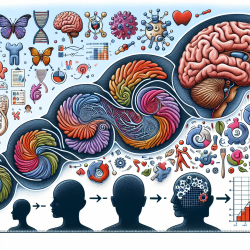Early identification of autism spectrum disorder (ASD) is crucial for optimizing outcomes for children. A recent study, "Parental Experiences with Early Identification and Initial Care for their Child with Autism: Tailored Improvement Strategies," provides valuable insights into parental experiences and suggests strategies for improving early detection and care. Here, we discuss key findings and how practitioners can implement these insights to enhance their practice.
Understanding Parental Concerns
The study revealed that parents typically begin to notice developmental concerns around 22 months, but it often takes another 26 months before a formal ASD diagnosis is made. Parents' initial concerns often involve:
- Behavioral issues (62.2%)
- Language development delays (44.4%)
Interestingly, parents tend to report more severe concerns compared to first-line healthcare professionals, indicating a potential gap in the recognition of early ASD symptoms.
Barriers to Early Identification
Parents identified several barriers in the early identification process:
- Lack of Knowledge and Expertise: Many parents felt that general practitioners and preventive care professionals lacked the necessary knowledge to recognize early signs of ASD.
- Dismissal of Parental Concerns: Parents often felt their concerns were marginalized, leading to feelings of insecurity and frustration.
- Systemic Inflexibility: Parents faced challenges navigating a fragmented healthcare system with long waiting lists, causing unnecessary delays in diagnosis and care.
Improvement Strategies
Based on these barriers, the study suggests several strategies for improvement:
- Enhancing Knowledge and Expertise: Provide additional training for primary and preventive care professionals to recognize early ASD symptoms. This could involve online courses, workshops, and continuous professional development programs.
- Family-Centered Care: Adopt a family-centered approach that validates parental concerns and involves them in the decision-making process. This includes using specific screening tools and promoting shared decision-making.
- Streamlining the System: Implement a case management system to help parents navigate the healthcare system more efficiently. This would also involve closer collaboration between different healthcare providers to reduce fragmentation.
Practical Applications for Practitioners
Practitioners can implement these strategies in several ways:
- Attend specialized training sessions on early ASD symptoms.
- Use validated screening tools like the M-CHAT-R/F during routine check-ups.
- Establish a family-centered care model in your practice to ensure parents feel heard and involved.
- Advocate for and participate in integrated care networks to improve collaboration and reduce systemic barriers.
Conclusion
By understanding and addressing the barriers identified by parents, practitioners can significantly improve the early identification and care of children with ASD. Implementing the suggested strategies will not only enhance diagnostic accuracy but also provide timely and appropriate interventions, ultimately leading to better outcomes for children and their families.
To read the original research paper, please follow this link: Parental Experiences with Early Identification and Initial Care for their Child with Autism: Tailored Improvement Strategies.










